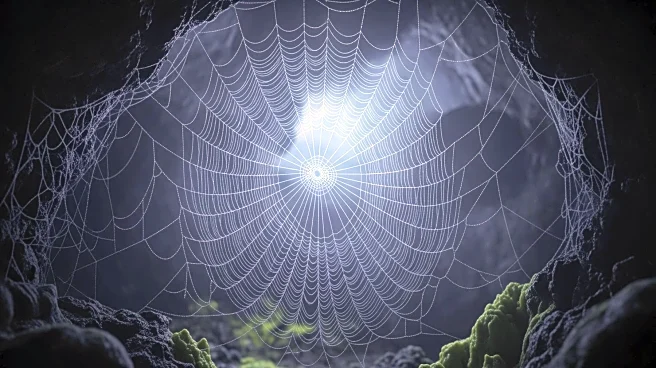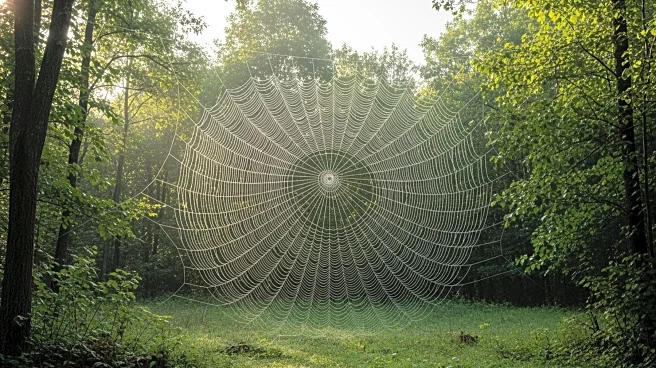What's Happening?
Researchers have identified what may be the world's largest spiderweb inside Sulfur Cave, located on the Albanian-Greek border. The web, spanning 1,140 square feet, is home to over 111,000 spiders from
two species: Tegenaria domestica and Prinerigone vagans. This discovery marks the first evidence of colonial behavior in these common spider species, which typically do not exhibit such cooperative living. The spiders thrive in the cave's sulfur-rich environment, feeding on non-biting midges that consume microbial biofilms. The unique conditions have led to genetic adaptations in the spiders, differentiating them from their relatives outside the cave.
Why It's Important?
The discovery of this massive spider colony challenges existing knowledge about spider behavior, particularly regarding species that typically do not form colonies. The adaptation of these spiders to the sulfur-rich environment highlights the potential for genetic plasticity in extreme conditions. This finding could influence future research on species adaptation and cooperation, providing insights into ecological dynamics in unique environments. Preserving the colony is crucial, as it offers a rare opportunity to study these behaviors and adaptations further.
What's Next?
Researchers plan to conduct further studies to uncover more details about the spider colony's dynamics and adaptations. The location of the cave between two countries presents challenges for preservation efforts, but scientists emphasize the importance of maintaining the colony for ongoing research. Future studies may explore the genetic differences and ecological interactions within the colony, contributing to broader understanding of species adaptation and cooperation.
Beyond the Headlines
The discovery raises questions about the ethical implications of preserving unique ecological sites that span international borders. It also highlights the importance of interdisciplinary research in uncovering unexpected biological phenomena. The spider colony's existence in such a harsh environment underscores the resilience and adaptability of life, prompting discussions on conservation priorities in similar habitats.











